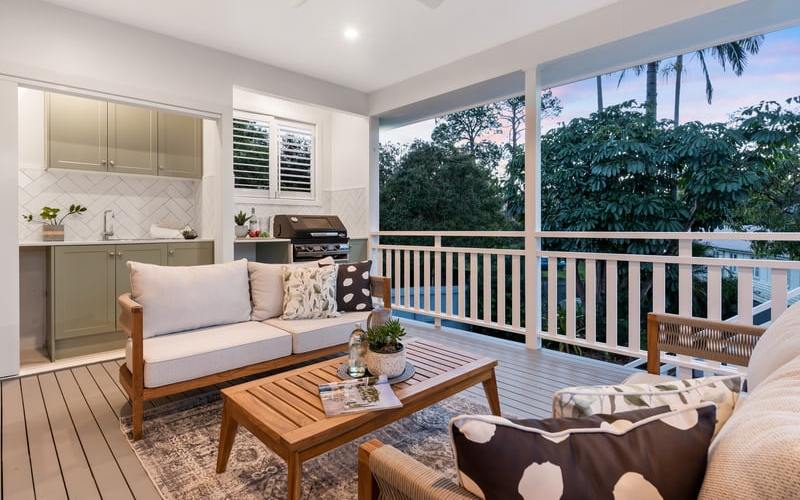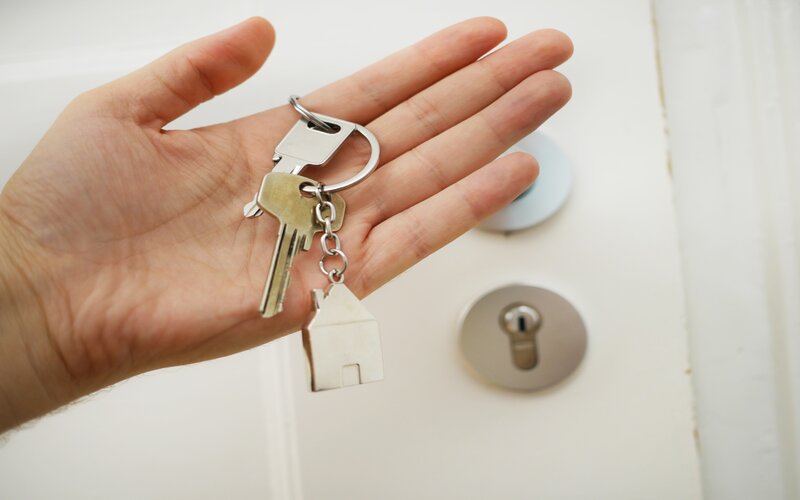The popularity of the fixed rate home loan has grown, with borrowers favouring payment certainty, and banks offering sharp pricing. You might look at the interest rates available on variable or shorter-term fixed rates nowadays and decide the interest rates on 10-year fixed products aren't too much more of a punishment, or worth it for repayment certainty.
With that said there are decidedly few lenders offering ten-year fixed home loans on the Australian market. So far, Savings.com.au’s market research had identified two at the time of writing:
- RAMS
Newcastle Permanent offered them as recently as September 2022, however a representative told Savings.com.au the 10-year product was binned due to lack of customer interest.
A number of other lenders also used to offer them, including other big four banks, but historically low interest rates have made them unpopular with borrowers and lenders.
| Lender | Home Loan | Interest Rate | Comparison Rate* | Monthly Repayment | Repayment type | Rate Type | Offset | Redraw | Ongoing Fees | Upfront Fees | Max LVR | Lump Sum Repayment | Extra Repayments | Split Loan Option | Tags | Features | Link | Compare | Promoted Product | Disclosure |
|---|---|---|---|---|---|---|---|---|---|---|---|---|---|---|---|---|---|---|---|---|
7.04% p.a. | 7.13% p.a. | $2,933 | Interest-only | Fixed | $0 | $160 | 80% | |||||||||||||
7.49% p.a. | 7.51% p.a. | $3,121 | Interest-only | Fixed | $null | $null | 80% | |||||||||||||
7.24% p.a. | 7.11% p.a. | $3,407 | Principal & Interest | Fixed | $null | $null | 80% | |||||||||||||
7.24% p.a. | 7.27% p.a. | $3,017 | Interest-only | Fixed | $0 | $160 | 70% | |||||||||||||
7.24% p.a. | 7.09% p.a. | $3,017 | Interest-only | Fixed | $null | $null | 80% | |||||||||||||
7.69% p.a. | 7.50% p.a. | $3,561 | Principal & Interest | Fixed | $null | $160 | 95% | |||||||||||||
7.69% p.a. | 7.65% p.a. | $3,204 | Interest-only | Fixed | $null | $160 | 95% | |||||||||||||
7.69% p.a. | 7.65% p.a. | $3,561 | Principal & Interest | Fixed | $null | $160 | 95% | |||||||||||||
7.69% p.a. | 7.47% p.a. | $3,204 | Interest-only | Fixed | $null | $160 | 90% |
See Also: The Potential $35,000 Cost of Breaking a Fixed Home Loan
Why are 10 year fixed home loans hard to find?
As you might be aware, variable loans have traditionally been the home loan of choice in Australia. Until recently, even two to three year fixed loans were relatively unpopular, but have since gained market share. Still, anything longer than a five year fixed term is pretty rare in Australia. But why?
The popularity of variable rates in Australia is because, in very simple terms, our banks' wholesale borrowing structures are different. If you know anything about the United States' financial market, you’ll see that 10-30 year fixed home loans are the preferred option
In the United States, banks typically source funds on the 10-30 year bond market, while in Australia, banks are much more short term in their borrowing. Essentially, Australia's debt market hasn't quite evolved enough to allow local lenders to sell bundles of longer-term fixed-rate loans to bond investors, so the lenders face being stuck with long-term fixed-rate loans on the balance sheet, which is quite unappealing.
This doesn’t stop borrowers' home loans in the United States changing lenders' hands multiple times, but the source of origination remains the same. Because of how banks borrow money, this makes 10-30 year rates in the US relatively affordable, compared to what would be seen in Australia, where short-term fixed and variable rates reign supreme.
In the US, a large proportion of mortgages are also supported by two government entities - Fannie Mae and Freddie Mac. They essentially eliminate a lot of the risk banks face when writing a 30 year mortgage and worrying about what wholesale markets are doing. Australia doesn't quite have the same level of government intervention in the mortgage market.
Aside from that, there are also cultural differences. Many Australians simply prefer a variable or adjustable rate mortgage. In contrast, 'variable' or 'adjustable' rate mortgages are often talked about as the devil in the US.
Contributing editor of Rolling Stone magazine and author of Griftopia, Matt Taibbi - who also covered the Global Financial Crisis in great length - had this to say about variable rates in the US:
"Some Americans were similarly beaten and re-beaten in the mortgage con, up to three times. Some were induced to buy exotic … variable-rate mortgages, then their pension funds invested in mortgage securities, and then, when the markets all went belly up, their tax dollars went to ‘save the economy', which in practice often meant buying up toxic mortgages at cost from guilty banks." - Matt Taibbi, via Substack newsletter.
Pros and cons of a 10 year fixed home loan
There are a few pros and cons with 10-year fixed loans.
Pros
-
Repayment certainty: The fortnightly or monthly repayment won’t change for 10 years. This provides certainty, rather than having to worry about what’s happening in the market.
-
Rates no longer so unappealing: With RBA rate rises starting in May 2022, many lenders have jacked up variable, and one to five year fixed rates so much that some 10 year rates might not seem so uncompetitive anymore.
-
Weather any rate rises: Any rate rises as economic conditions improve trigger a flurry of refinancing activity and potential worry among other borrowers. A few basis points' difference could add hundreds to your repayment every month. You wouldn’t have to worry about that.
-
‘Set and forget’: Depending on how financially savvy you are, it can be easy to watch market movements like a hawk. With a 10 year loan, you can ‘set and forget’, which is potentially a load off the shoulders for some.
Cons
-
Higher interest rates: Interest rates on 10-year loans are typically much higher even with the RBA 'tightening' cycle happening.
-
Potentially big break fees: If you exit a fixed loan early, you’ll typically incur break costs. Depending on your loan size and how much you have left on your loan term, this could work out to be many thousands of dollars.
-
Fewer lenders = less competition: Across the wider market there is a lot of competition with upwards of 100 lenders vying for your attention. Market saturation stokes competition. With just two lenders, as per our market research, offering 10 year loans, there is much less competition.
-
More loan restrictions:
-
Repayments: Fixed loans typically carry additional restrictions as to how much you extra you can repay into the loan. If you’re planning on paying off your loan early, a 10 year fixed option may not be for you.
-
Deposit: Some - not all - 10 year fixed loans require larger deposits. This is a problem if you’re looking at getting into the market sooner with say a 5% deposit.
-
A fixed loan is essentially a small bet between borrower and lender. You lock in a rate because you think rates will go up, but do you really know more than a bank with its many economists? A lot of thought goes into the interest rates, and chances are they’re going to come out on top regardless of what the market does.
Buying a home or looking to refinance? The table below features home loans with some of the lowest interest rates on the market for owner occupiers.
| Lender | Home Loan | Interest Rate | Comparison Rate* | Monthly Repayment | Repayment type | Rate Type | Offset | Redraw | Ongoing Fees | Upfront Fees | Max LVR | Lump Sum Repayment | Extra Repayments | Split Loan Option | Tags | Features | Link | Compare | Promoted Product | Disclosure |
|---|---|---|---|---|---|---|---|---|---|---|---|---|---|---|---|---|---|---|---|---|
5.54% p.a. | 5.58% p.a. | $2,852 | Principal & Interest | Variable | $0 | $530 | 90% |
| Promoted | Disclosure | ||||||||||
5.49% p.a. | 5.40% p.a. | $2,836 | Principal & Interest | Variable | $0 | $0 | 80% |
| Promoted | Disclosure | ||||||||||
5.64% p.a. | 5.89% p.a. | $2,883 | Principal & Interest | Variable | $250 | $250 | 60% |
| Promoted | Disclosure | ||||||||||
5.64% p.a. | 5.89% p.a. | $2,883 | Principal & Interest | Variable | $248 | $350 | 60% |
| Disclosure |
First published on August 2021
Photo by Steven Ungermann on Unsplash

Ready, Set, Buy!
Learn everything you need to know about buying property – from choosing the right property and home loan, to the purchasing process, tips to save money and more!
With bonus Q&A sheet and Crossword!






.jpg)

 Harry O'Sullivan
Harry O'Sullivan
 Bea Garcia
Bea Garcia
 Denise Raward
Denise Raward

 William Jolly
William Jolly

